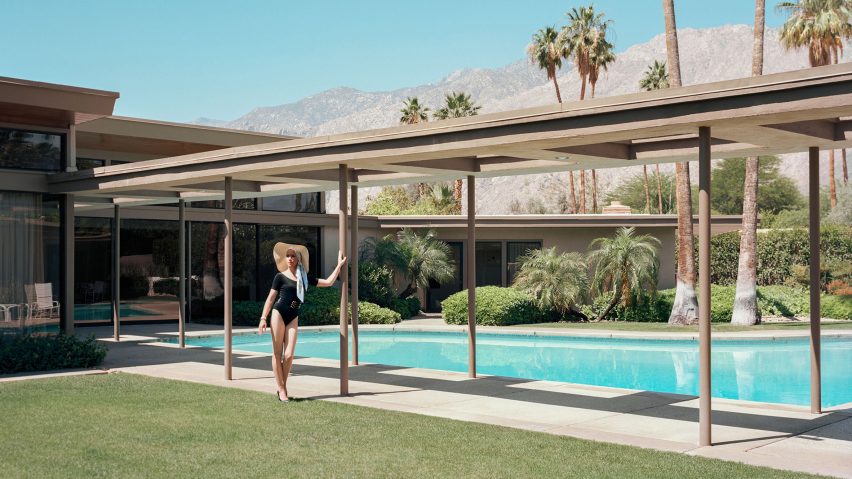
Twin Palms by E Stewart Williams provided a private retreat for Frank Sinatra
Our series covering the best mid-century architecture in Palm Springs, to coincide with the California city's Modernism Week, continues with the sprawling estate created for music and film legend Frank Sinatra.
Twin Palms was designed by E Stewart Williams, one of several architects that have become synonymous with Palm Springs' unique brand of "desert modernism".
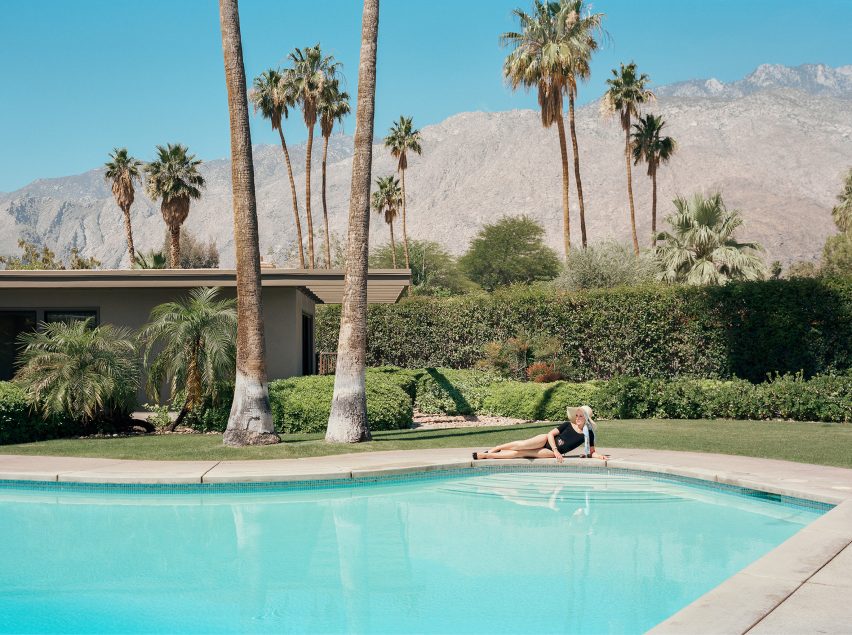
Back in 1947, Sinatra was one of the first celebrities to put down roots in Palm Springs, which at the time was a sleepy desert town, but easily accessible from nearby Los Angeles.
For himself and his wife Nancy, the star commissioned local architect Williams to design a home where they could escape the gossip and cameras of Hollywood. It was the architect's first residential project.
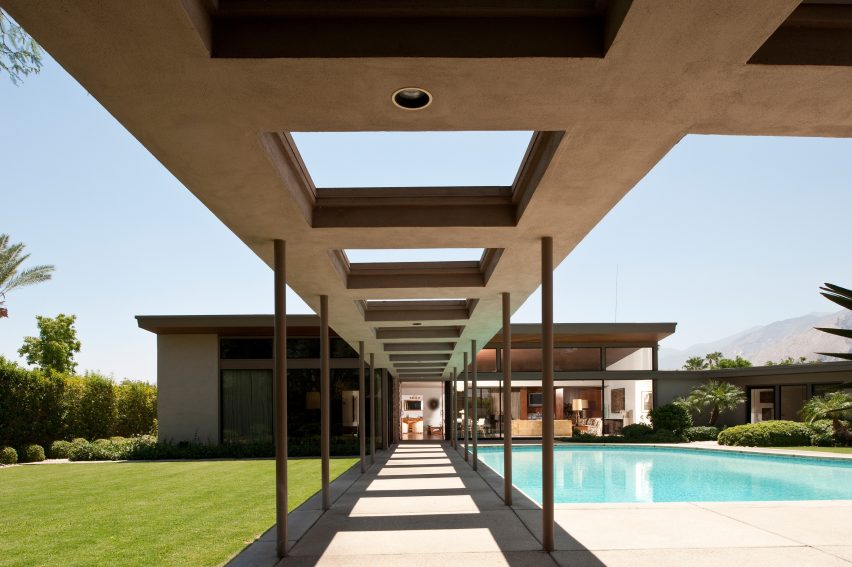
Sinatra asked for a grand Georgian-style property that would represent his new-found fortune, to be ready for Christmas just a few months later. But Williams convinced the star to opt for a more climate-appropriate design, with low rectangular wings built from unconventional materials, and hand over $150,000 (£107,028) to build it.
Completed in time for a lavish New Year party, Twin Palms soon became a frequent venue for Hollywood stars to relax and revel. Many of them – including Al Jolson, Jack Benny and Cary Grant – also built or purchased their own homes in the neighbourhood, which quickly became known as Movie Colony.
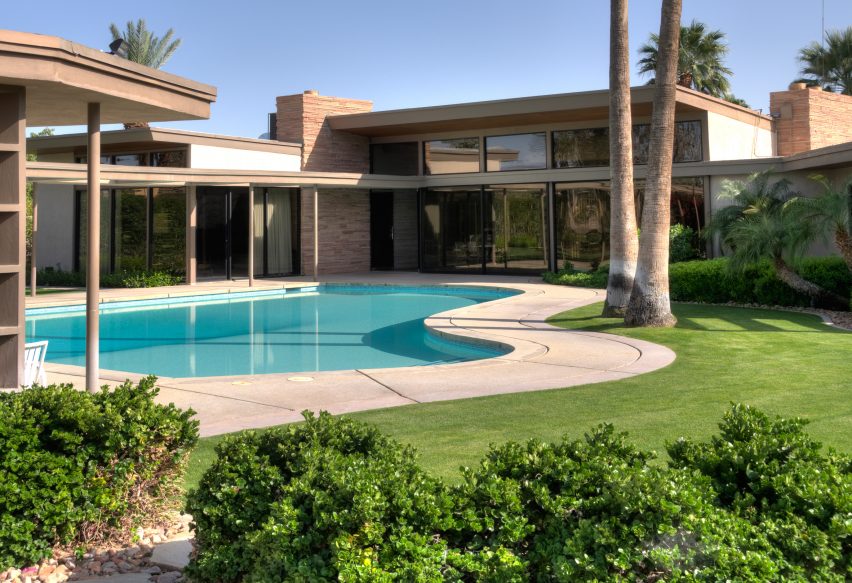
Sinatra's 4,500-square-foot (418-square-metre) pad includes four bedrooms and seven bathrooms, one of which has a chipped sink from where he allegedly threw a champagne bottle at second wife Ava Gardner. The master suite occupies its own wing, for maximum privacy.
The other rooms are laid out within long perpendicular volumes, many with sliding glass doors that allow direct access to the outdoor spaces.
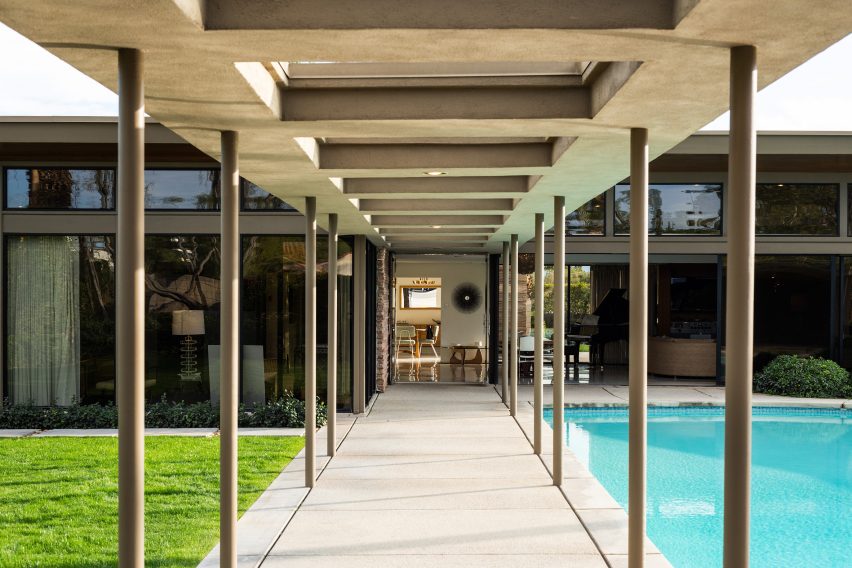
A piano-shaped swimming pool forms a focal point in the garden, close to a pair of tall palm trees that the property is named after. An expansive patio offers plenty of space for glamorously lounging and entertaining outdoors, while further accommodation is provided by a pool house that has its own kitchenette.
The ancillary block is connected to the main residence by a veranda with square holes in its top, which wraps around the pool. Sinatra also has a recording studio incorporated into the home, where he spent increasing amounts of time later in life as he became more private.
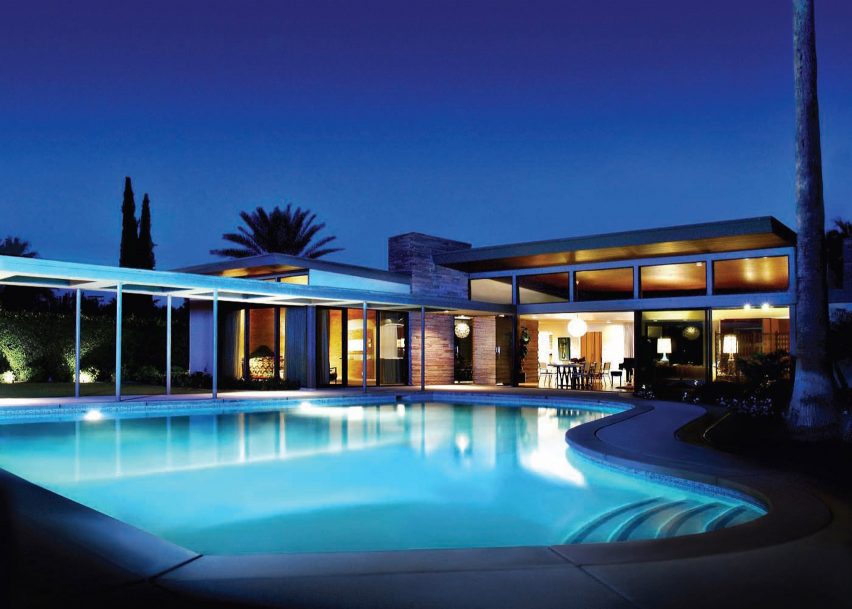
The public were given a glimpse of the house when it was used as a set for Joan Crawford's 1950 film The Damned Don't Cry. It was also captured by architectural photographer Julius Shulman, whose images of this and other modernist homes became the posters for California living during the 1950s and 1960s.
Today, the estate is available to book for vacations, weddings and events, film and photography shoots, dinner parties, and private tours. Twin Palms is also open to look around during Palm Springs Modernism Week, 15-25 February 2018, as part of the annual celebration of the city's architectural heritage.
Dezeen is marking the occasion with a series of articles about Palm Springs' most important examples of modernism, which so far includes the Tramway Gas Station, Kaufmann House, Hope Residence and Bank of America.